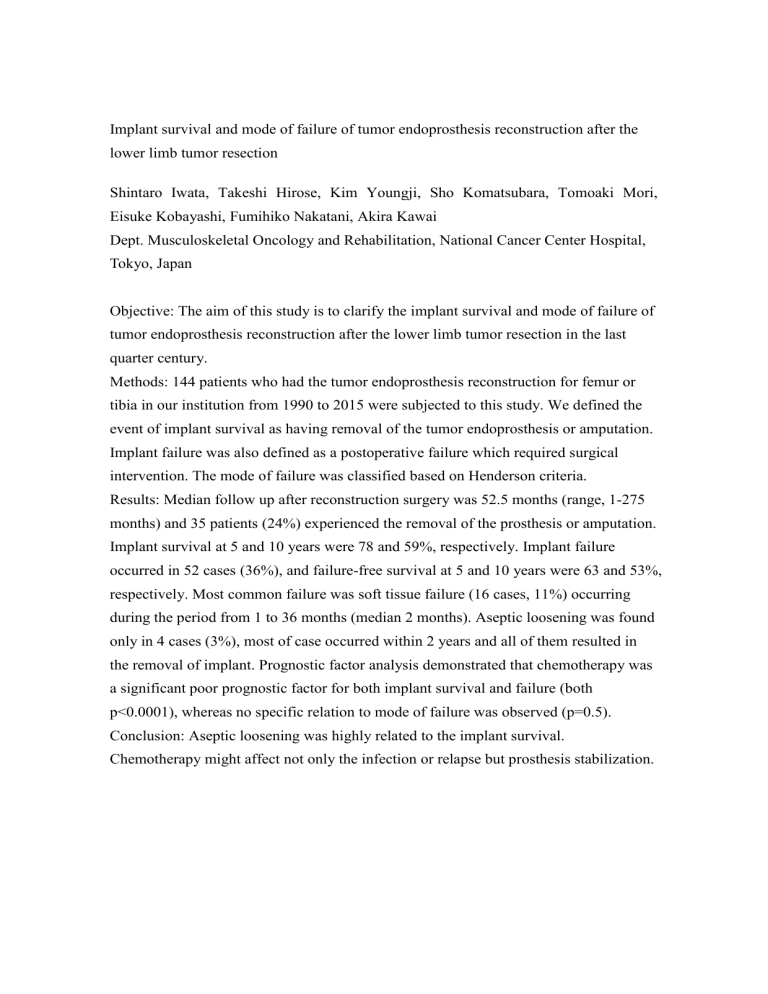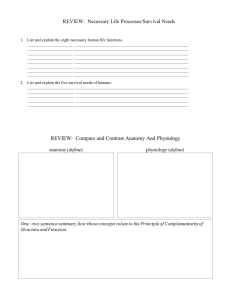Implant survival and mode of failure of tumor endoprosthesis reconstruction after the lower limb tumor resection
advertisement

Implant survival and mode of failure of tumor endoprosthesis reconstruction after the lower limb tumor resection Shintaro Iwata, Takeshi Hirose, Kim Youngji, Sho Komatsubara, Tomoaki Mori, Eisuke Kobayashi, Fumihiko Nakatani, Akira Kawai Dept. Musculoskeletal Oncology and Rehabilitation, National Cancer Center Hospital, Tokyo, Japan Objective: The aim of this study is to clarify the implant survival and mode of failure of tumor endoprosthesis reconstruction after the lower limb tumor resection in the last quarter century. Methods: 144 patients who had the tumor endoprosthesis reconstruction for femur or tibia in our institution from 1990 to 2015 were subjected to this study. We defined the event of implant survival as having removal of the tumor endoprosthesis or amputation. Implant failure was also defined as a postoperative failure which required surgical intervention. The mode of failure was classified based on Henderson criteria. Results: Median follow up after reconstruction surgery was 52.5 months (range, 1-275 months) and 35 patients (24%) experienced the removal of the prosthesis or amputation. Implant survival at 5 and 10 years were 78 and 59%, respectively. Implant failure occurred in 52 cases (36%), and failure-free survival at 5 and 10 years were 63 and 53%, respectively. Most common failure was soft tissue failure (16 cases, 11%) occurring during the period from 1 to 36 months (median 2 months). Aseptic loosening was found only in 4 cases (3%), most of case occurred within 2 years and all of them resulted in the removal of implant. Prognostic factor analysis demonstrated that chemotherapy was a significant poor prognostic factor for both implant survival and failure (both p<0.0001), whereas no specific relation to mode of failure was observed (p=0.5). Conclusion: Aseptic loosening was highly related to the implant survival. Chemotherapy might affect not only the infection or relapse but prosthesis stabilization.


